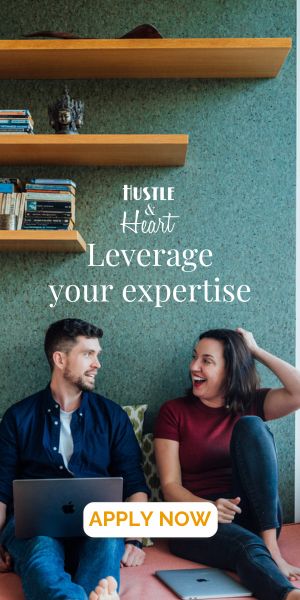You’ve been wooing your people with marketing – educating and informing them, introducing a little of your approach and experience, addressing any misconceptions or misunderstandings, sharing a little of your personality and style. Your blogs, emails, and videos have been building a rapport and developing relationships with countless people.
You’re getting towards asking for the sale now. You’ve addressed common fears, offered a guarantee, and now it’s time to close. It’s time to bring in urgency and scarcity – the two oldest sales techniques in the book.
Urgency and scarcity are natural to most sole traders and small businesses by nature of our business model. We have limited hours in the day and limited people (ourselves and our staff). And yet we don’t emphasise this, and in this way, leave too much money on the table.
Pitfalls of pressure
We’ve all been in uncomfortable situations with sales people where the atmosphere is suddenly sucked into a vortex of pressure. We feel pushed and unsupported. So we walk away – or worse, purchase something we later regret.
Understandably, when it’s our business, we’re keen not to repeat these experiences. We’ve spent time and effort developing rapport and trust. We hesitate to break this with one misplaced move.
And so we don’t use urgency or scarcity. Instead, we nod and smile and assure, as our prospect talks themselves out of purchasing, while reassuring you that they will purchase later.
The crux of the matter
At its heart, using urgency and scarcity in your sales process is about helping people to make a decision. Without some pressure caused by a deadline, it’s too easy to sit forever on the fence, neither in nor out. And while it’s easy to do, it’s leads to stagnation.
This tussle – between the business owner who wants decision and commitment and the prospect who wants to keep their options open and have things available at their convenience, anytime – is never ending.
Rationally, most people know that commitment is required for change. We know that the transformation we’re most excited by requires effort – perhaps intangible effort such as a change of attitude, belief or approach, or routines and activities, dropping unhelpful actions and introducing helpful actions.
But diet pills still sell. There’s an irrational, emotional part of us that wants to believe in the miracle cure, especially when at our most vulnerable. And we want it at the time that we want it – which may be late at night, when feeling an intoxicating mix of desperate and hopeful.
The possibility of no
I love hearing no. In fact, I push for it. I invest energy into getting to know people, to learn about their particular challenges, goals and dreams. My ability to read between the lines and intuit why things aren’t going the way they’d like and understand as quickly as possible a business owner’s strengths, weaknesses and potential, is a skill developed over many years.
When I’ve sent quotes or had sales conversations with people about a program, course or business coaching, I want to hear a yes or a no. I’m happy to hear no. Not only is it a courtesy, but it’s also an opportunity for people to share why they’re not purchasing – which can be invaluable.
Of course, not all information will be relevant: some people are simply a bad fit for your business; not ready (or qualified) for what you’re offering; or wanting something that you don’t or can’t deliver.
But so many of us miss this invaluable opportunity because we’re too busy hiding from our clients.
Think about the last time you seriously considered a purchase, got close to buying, and then changed your mind. What happened? Too often, salespeople or business owners get either embarrassed or angry. There’s no way that they can learn anything useful in this state because their emotion stops their receptivity.
Think about the last time a sales person got annoyed or angry at you for not purchasing – how inclined were you to purchase from them in future?
Emotional resilience and sales
To be an effective sales person, you need to have emotional maturity and resilience. First, you need to believe in the value that you offer. Second, you need to be driven to share this with as many people who you believe would benefit (ie: they’re qualified to buy). Third, you need the emotional resilience to bounce back from rejection.
Passion for what you do is not enough. In fact, your passion for what you do can be a great undoing if it’s not coupled with a drive to share this with the world. If we’re too emotionally invested in our passion, it’s easy to take all rejections and setbacks as a personal affront. The danger there is we retreat into ourselves – lowering our voice, becoming less visible, closing ourselves off from our community and broader society.
Your driving desire to get your offering in front of people is what separates a personal passion project from a business.
The challenge of sales is also the opportunity to build your emotional strength – to see whether your desire to help others get results (the results your offering delivers) outweighs your desire to avoid discomfort and rejection. It’s neither straightforward, nor easy. But potentially, it’s the difference between where you are now in business and where you want to be.
Want to learn how to use urgency and scarcity in sales, without the high-pressure, sleaze or dishonesty? Then register your interest in our Hustle & Heart group business coaching program.





